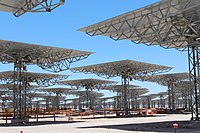
Photo from wikipedia
Abstract Metal artifacts were one of the most relevant wealth finance items for the political economy of the Inca empire. Inca provincial expansion in the Collasuyu has largely been explained… Click to show full abstract
Abstract Metal artifacts were one of the most relevant wealth finance items for the political economy of the Inca empire. Inca provincial expansion in the Collasuyu has largely been explained by the need to intensify mining to satisfy their metallurgical demand. Despite the evidence for many mines and metallurgical activities during the Late Horizon in the southern Andes, it is still not clear how their production was organized and articulated. By studying one of the most important metallurgical centers in northern Chile, Vina del Cerro, we determined the following: first, the metal obtained was unalloyed copper; and second, there is no relevant evidence for the manufacturing of final artifacts in the site, or at any of the major Inca settlements in the Copiapo valley. We argue that tin bronze artifacts in Copiapo were likely imported from abroad and that the local copper production was likely taken elsewhere for processing and final manufacture. New radiocarbon dates indicate that Inca metallurgical activities in Copiapo valley co-opted a previous local site and technology. However, the Incas did not establish an intense occupation there. This case evidences the logistics and challenges of developing a political economy based on wealth finance in the far corners of the Inca Empire, where decentralizing the chaine operatoire seemed to be the chosen strategy for economic control.
Journal Title: Journal of Archaeological Science: Reports
Year Published: 2020
Link to full text (if available)
Share on Social Media: Sign Up to like & get
recommendations!